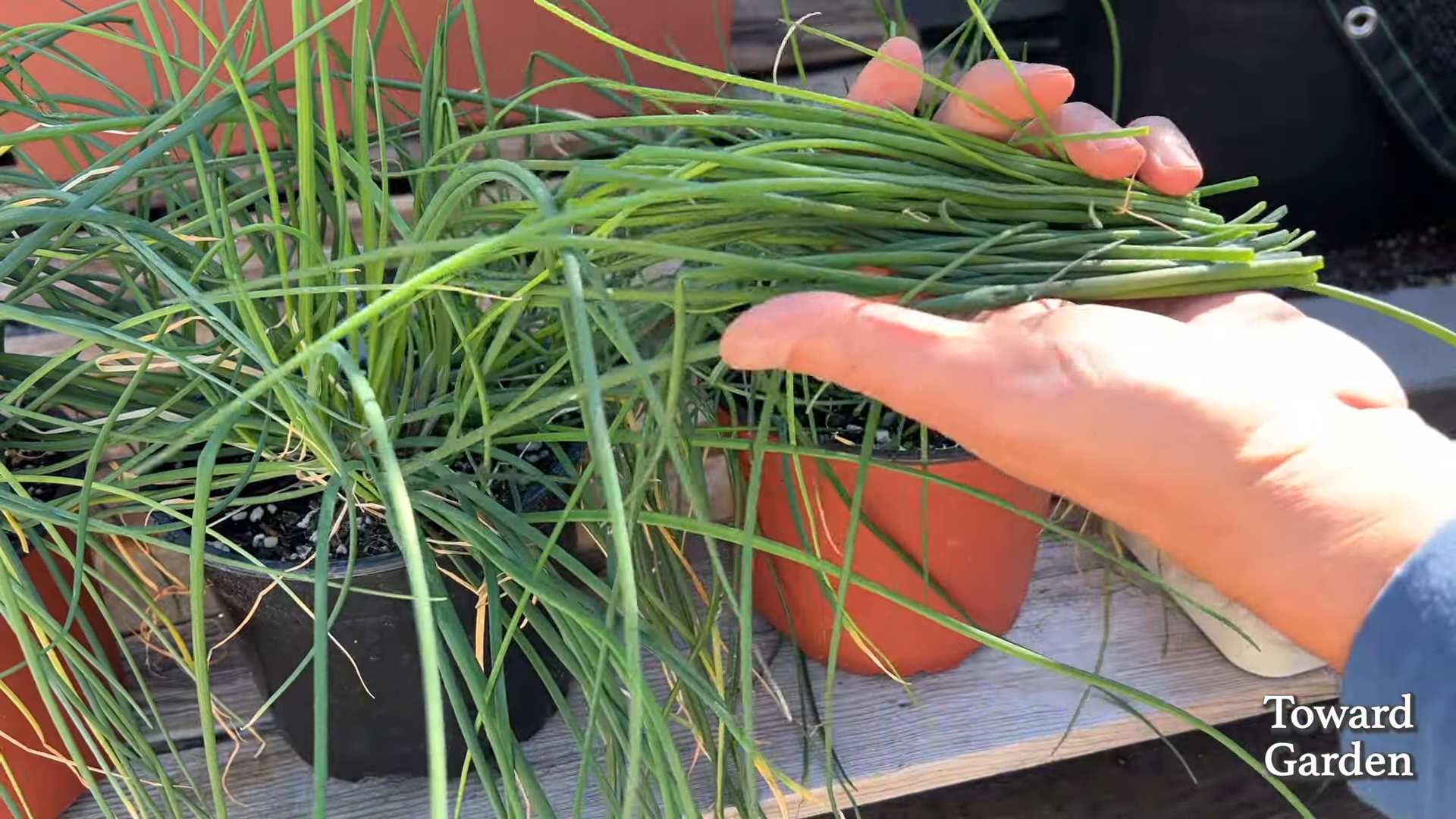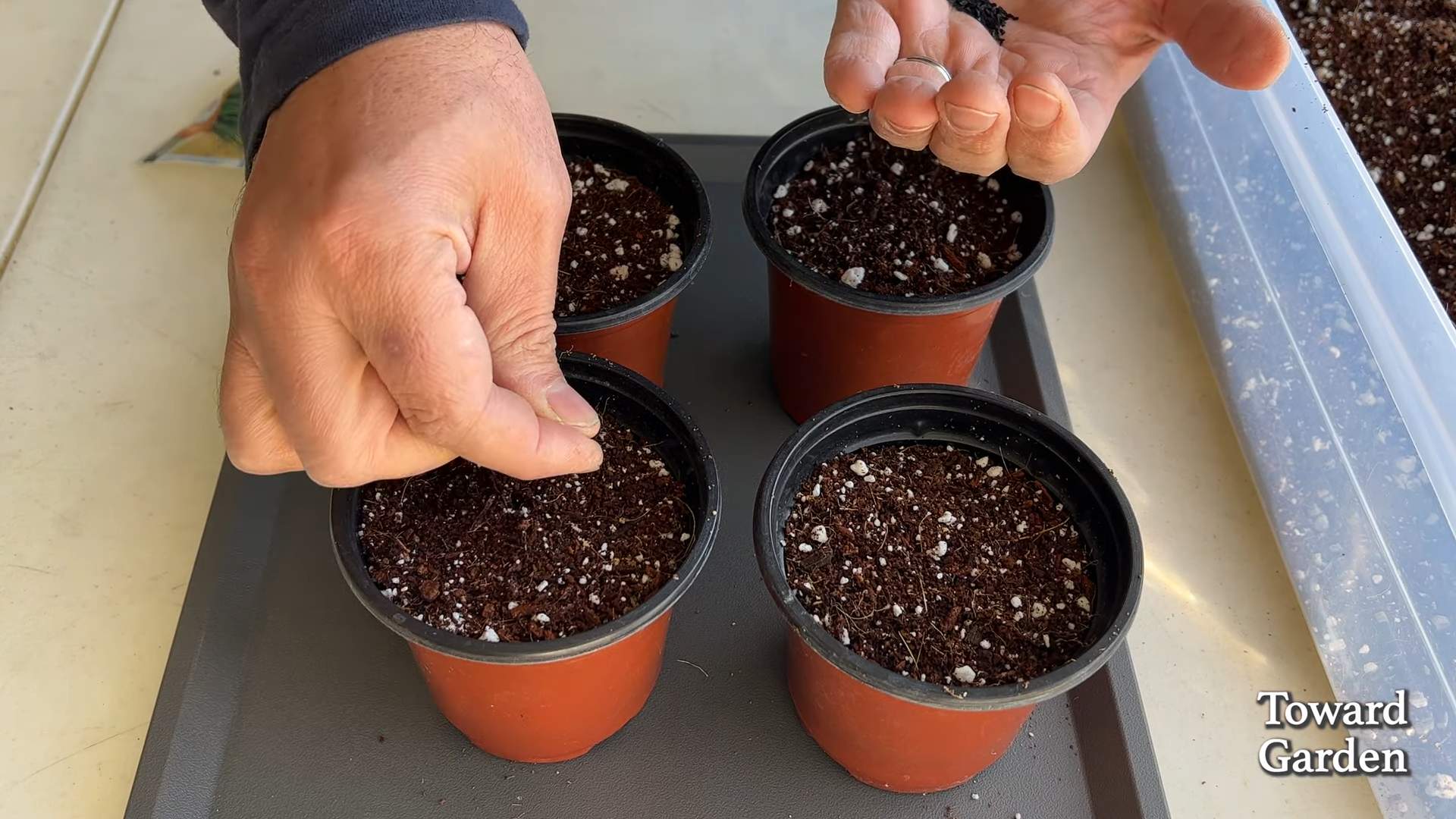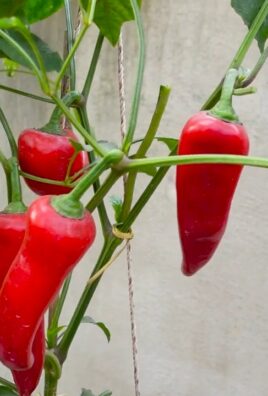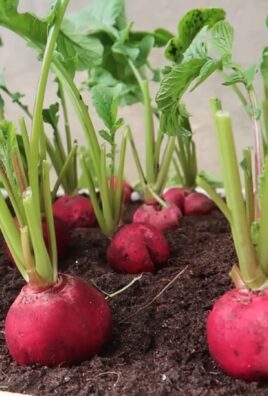Grow Chives Indoors? Absolutely! Imagine snipping fresh, flavorful chives right from your kitchen windowsill, adding a burst of oniony goodness to your meals year-round. No more sad, wilted bunches from the grocery store! This isn’t just a pipe dream; it’s a deliciously achievable reality with a few simple tricks and a little DIY spirit.
For centuries, chives have been a culinary staple, gracing dishes from European kitchens to Asian stir-fries. Their delicate flavor and vibrant green color have made them a beloved herb across cultures. But what if you don’t have a sprawling garden or live in a climate that supports year-round outdoor growth? That’s where the magic of indoor gardening comes in!
I know what you’re thinking: “Indoor gardening sounds complicated!” But trust me, growing chives indoors is surprisingly easy, even for beginners. This DIY guide will walk you through every step, from choosing the right container to providing the perfect amount of light and water. You’ll learn simple hacks to ensure your chives thrive, providing you with a constant supply of fresh herbs. Forget expensive store-bought chives – with these tips, you can grow chives indoors and enjoy their fresh flavor whenever you desire. Let’s get started and transform your kitchen into a mini herb garden!

Grow Chives Indoors: A Beginner’s Guide
Hey there, fellow plant enthusiasts! Ever dreamt of snipping fresh chives right from your kitchen windowsill? Well, dream no more! Growing chives indoors is surprisingly easy, rewarding, and adds a touch of green (and deliciousness!) to your home. I’m going to walk you through everything you need to know to cultivate your own thriving chive patch indoors.
What You’ll Need
Before we dive in, let’s gather our supplies. Here’s a checklist of everything you’ll need to get started:
* **Chive Seeds or a Chive Plant:** You can start from seeds, which is more economical, or purchase a small chive plant from a garden center for faster results. I personally prefer starting from seeds, it’s so satisfying to watch them sprout!
* **Pot with Drainage Holes:** Choose a pot that’s at least 6 inches in diameter and depth. Drainage is crucial to prevent root rot. Terracotta pots are great because they allow the soil to breathe.
* **Well-Draining Potting Mix:** Avoid using garden soil, as it can become compacted indoors. Opt for a high-quality potting mix specifically formulated for containers.
* **Watering Can or Spray Bottle:** For gentle watering.
* **Sunny Windowsill or Grow Light:** Chives need plenty of light to thrive. A south-facing windowsill is ideal, but if you don’t have one, a grow light will do the trick.
* **Optional: Seed Starting Tray and Dome:** If you’re starting from seeds, these will help create a humid environment for germination.
* **Optional: Fertilizer:** A balanced liquid fertilizer can help boost growth, but it’s not essential.
Starting from Seeds: A Step-by-Step Guide
If you’re like me and love the satisfaction of watching tiny seeds transform into vibrant plants, then starting from seeds is the way to go! Here’s how:
1. **Prepare Your Seed Starting Tray (Optional):** If you’re using a seed starting tray, fill each cell with moistened potting mix. Gently press the soil down to remove any air pockets. If you’re planting directly into your pot, skip to step 3.
2. **Sow the Seeds:** Sprinkle 2-3 chive seeds per cell (or directly onto the surface of the potting mix in your pot). Chives need light to germinate, so don’t bury them too deep. Gently press them into the soil.
3. **Water Gently:** Use a spray bottle to mist the soil surface. You want to keep the soil consistently moist, but not soggy.
4. **Cover with a Dome (Optional):** If you’re using a seed starting tray, cover it with a dome to create a humid environment. This will help the seeds germinate faster.
5. **Place in a Warm, Sunny Location:** Place the seed starting tray or pot in a warm, sunny location, or under a grow light.
6. **Keep the Soil Moist:** Check the soil moisture daily and mist with water as needed.
7. **Wait for Germination:** Chive seeds typically germinate in 7-14 days. Be patient!
8. **Thin Seedlings (If Necessary):** Once the seedlings have emerged and have a few sets of true leaves, thin them out so that only one strong seedling remains per cell (or space them about 1-2 inches apart in your pot).
9. **Transplant (If Necessary):** If you started your seeds in a seed starting tray, transplant the seedlings into your pot once they’re large enough to handle. Gently remove the seedlings from the tray and plant them in the pot, spacing them about 1-2 inches apart.
Planting a Chive Plant: A Simple Process
If you’re short on time or just want to get a head start, purchasing a chive plant from a garden center is a great option. Here’s how to plant it:
1. **Prepare Your Pot:** Fill your pot with well-draining potting mix, leaving about an inch of space at the top.
2. **Remove the Chive Plant from its Container:** Gently squeeze the sides of the container to loosen the plant. Carefully remove the plant, being careful not to damage the roots.
3. **Loosen the Roots:** Gently loosen the roots of the chive plant. This will encourage them to spread out and establish themselves in the new pot.
4. **Plant the Chive Plant:** Place the chive plant in the center of the pot. Make sure the top of the root ball is level with the soil surface.
5. **Fill with Potting Mix:** Fill in the remaining space around the plant with potting mix. Gently press the soil down to remove any air pockets.
6. **Water Thoroughly:** Water the chive plant thoroughly until water drains out of the drainage holes.
Caring for Your Indoor Chives: The Key to Success
Now that you’ve planted your chives, it’s time to learn how to care for them. Here’s what you need to know:
* **Light:** Chives need at least 6-8 hours of sunlight per day. A south-facing windowsill is ideal. If you don’t have enough natural light, use a grow light. I’ve found that supplementing with a grow light, especially during the winter months, makes a huge difference.
* **Watering:** Water your chives when the top inch of soil feels dry to the touch. Avoid overwatering, as this can lead to root rot. Make sure the pot has good drainage.
* **Fertilizing:** Chives don’t need a lot of fertilizer, but a light feeding every few weeks can help boost growth. Use a balanced liquid fertilizer diluted to half strength. I usually fertilize mine every month or so during the growing season.
* **Temperature:** Chives prefer temperatures between 60-70°F (15-21°C).
* **Humidity:** Chives prefer moderate humidity. If the air in your home is dry, you can increase the humidity by placing a tray of water near the plant or using a humidifier.
* **Pruning:** Regular pruning is essential for keeping your chives healthy and productive. Snip off the tips of the leaves regularly to encourage new growth. This also prevents the chives from flowering, which can make the leaves taste bitter.
Harvesting Your Chives: Enjoy the Fruits (or Herbs!) of Your Labor
The best part about growing chives indoors is being able to harvest them whenever you need them! Here’s how to harvest your chives:
1. **Wait Until the Chives are at Least 6 Inches Tall:** This will ensure that the plant has enough energy to continue growing.
2. **Use Scissors or Kitchen Shears:** Cut the chives about 1-2 inches above the soil surface.
3. **Harvest Regularly:** The more you harvest, the more the chives will grow!
4. **Use Fresh or Freeze for Later:** Freshly harvested chives are best, but you can also freeze them for later use. To freeze chives, chop them up and place them in a freezer bag.
Troubleshooting: Common Problems and Solutions
Even with the best care, you might encounter some problems while growing chives indoors. Here are some common issues and how to fix them:
* **Yellowing Leaves:** This can be caused by overwatering, underwatering, or lack of nutrients. Check the soil moisture and adjust your watering accordingly. If the soil is dry, water thoroughly. If the soil is soggy, allow it to dry out before watering again. You can also try fertilizing the plant with a balanced liquid fertilizer.
* **Leggy Growth:** This is usually caused by lack of light. Move the plant to a sunnier location or use a grow light.
* **Pests:** Chives are generally pest-resistant, but they can occasionally be infested with aphids or spider mites. If you notice any pests, spray the plant with insecticidal soap.
* **Root Rot:** This is caused by overwatering. Make sure the pot has good drainage and avoid overwatering. If the plant has root rot, you may need to repot it in fresh potting mix.
Enjoy Your Homegrown Chives!
Growing chives indoors is a simple and rewarding way to add fresh flavor to your meals. With a little care and attention, you can enjoy a continuous supply of chives all year round. So go ahead, give it a try! I promise you won’t regret it. Happy gardening!

Conclusion
So, there you have it! Growing chives indoors is not only achievable but also incredibly rewarding. Imagine having fresh, flavorful chives at your fingertips, ready to elevate your culinary creations any time of year. No more last-minute trips to the grocery store or settling for dried herbs that lack that vibrant, fresh taste. This simple DIY project empowers you to become your own herb supplier, adding a touch of green to your home and a burst of flavor to your meals.
Why is this a must-try? Because it’s easy, cost-effective, and sustainable. You’re reducing your reliance on store-bought herbs, minimizing food waste, and connecting with nature in a small but meaningful way. Plus, the satisfaction of harvesting your own homegrown chives is simply unmatched.
But don’t stop there! Experiment with different varieties of chives. Garlic chives offer a milder, garlicky flavor, while common chives provide that classic oniony bite. You can also try growing your chives in different types of containers, from repurposed yogurt cups to stylish terracotta pots. Consider companion planting your chives with other herbs like parsley or basil for a miniature indoor herb garden.
Another variation to consider is starting your chives from seed versus transplanting established plants. Starting from seed requires a bit more patience, but it allows you to control the entire growing process. Transplanting established plants offers a quicker route to harvesting, but make sure to choose healthy, vibrant plants from a reputable source.
The possibilities are endless, and the rewards are plentiful. We wholeheartedly encourage you to give this DIY trick a try. You’ll be amazed at how easy it is to grow chives indoors and how much flavor they add to your dishes.
Don’t just take our word for it! We want to hear about your experiences. Share your photos, tips, and tricks in the comments below. Let us know what worked for you, what challenges you faced, and what delicious recipes you’ve created with your homegrown chives. Together, we can build a community of indoor herb enthusiasts and inspire others to embrace the joy of growing their own food. So, grab your pots, soil, and chive seeds, and get ready to embark on a flavorful adventure! This is your chance to master the art of how to grow chives indoors and enjoy fresh herbs year-round.
Frequently Asked Questions (FAQs)
Q: What is the best location for growing chives indoors?
A: Chives thrive in bright, indirect sunlight. A south-facing window is ideal, but an east- or west-facing window can also work. If you don’t have access to sufficient natural light, consider using a grow light to supplement their needs. Aim for at least 6-8 hours of light per day. Rotating the pot regularly will ensure even growth and prevent the chives from leaning towards the light source.
Q: What type of soil should I use for growing chives indoors?
A: Use a well-draining potting mix that is rich in organic matter. Avoid using garden soil, as it can become compacted and doesn’t drain well in containers. A mix of potting soil, compost, and perlite or vermiculite will provide the ideal growing medium for your chives. The compost adds nutrients, while the perlite or vermiculite improves drainage and aeration.
Q: How often should I water my indoor chives?
A: Water your chives when the top inch of soil feels dry to the touch. Avoid overwatering, as this can lead to root rot. Ensure that the pot has drainage holes to allow excess water to escape. During the warmer months, you may need to water more frequently than during the cooler months. Check the soil moisture regularly and adjust your watering schedule accordingly.
Q: How often should I fertilize my indoor chives?
A: Chives are not heavy feeders, but they will benefit from occasional fertilization. Use a balanced liquid fertilizer diluted to half strength every 4-6 weeks during the growing season (spring and summer). Avoid fertilizing during the dormant season (fall and winter). Organic fertilizers, such as compost tea or fish emulsion, are also excellent options.
Q: How do I harvest chives?
A: Harvest chives by snipping the leaves near the base of the plant, about an inch above the soil. This encourages new growth. Avoid cutting more than one-third of the plant at a time. You can harvest chives regularly throughout the growing season. The more you harvest, the more they will grow.
Q: Can I grow chives from seed indoors?
A: Yes, you can grow chives from seed indoors. Start the seeds indoors 6-8 weeks before the last expected frost. Sow the seeds about ¼ inch deep in a seed-starting mix. Keep the soil moist and warm (around 70-75°F). The seeds should germinate in 7-14 days. Once the seedlings have developed a few sets of true leaves, you can transplant them into larger pots.
Q: How do I deal with pests and diseases on my indoor chives?
A: Indoor chives are generally pest-resistant, but they can occasionally be affected by aphids or spider mites. If you notice any pests, try washing them off with a strong stream of water. You can also use insecticidal soap or neem oil to control pests. Avoid overwatering to prevent fungal diseases. Ensure good air circulation around the plants.
Q: Can I freeze or dry chives for later use?
A: Yes, you can freeze or dry chives to preserve them for later use. To freeze chives, chop them finely and place them in a freezer bag or container. They will retain their flavor and color for several months. To dry chives, spread them out on a baking sheet and dry them in a low oven (around 170°F) until they are brittle. You can also use a dehydrator. Store the dried chives in an airtight container.
Q: My chives are flowering. Should I remove the flowers?
A: Chive flowers are edible and have a mild onion flavor. However, flowering can sometimes reduce leaf production. If you prefer to focus on leaf production, you can remove the flowers as they appear. Alternatively, you can let the flowers bloom and enjoy their beauty and flavor.
Q: How long will my indoor chives last?
A: With proper care, your indoor chives can last for several years. Repot them every year or two to refresh the soil and provide them with more space to grow. Divide the plants if they become overcrowded. Regular harvesting and proper fertilization will also help to keep your chives healthy and productive.




Leave a Comment